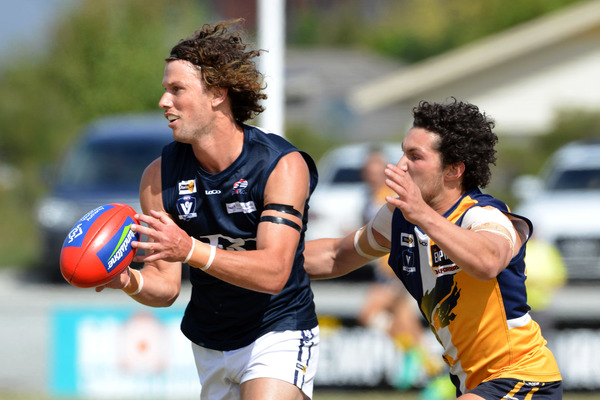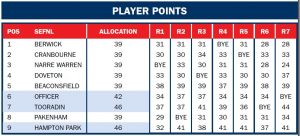
By David Nagel
Is the AFL Victoria Player Points System equalising community football as it was initially intended to do?
A system where each community club is given a cap of points, players have a rating, and the club ensures the cap is not breached when its senior 22 runs on to the ground each weekend.
A look at the table below would suggest an emphatic no is the answer to the question.
Every player that plays community football has a PPS ranking – from a six-point player who has played AFL football over the last three years, all the way down to the one-point home player who has committed his football journey to one club or its junior affiliate.
The overriding objectives of the PPS Policy include the promotion of player loyalty and junior development, and to ensure teams fielded in competitions are strong and as equally matched as possible.
It’s just not working around this neck of the woods at the moment.
Let’s take the current situation in the South East Football Netball League as an example.
A base allocation of 39 points has been capped for each club, with additional total team points being allocated to Hampton Park (46), Tooradin (46) and Officer (42) due to their unique local conditions.
Additional total team points may be allocated to a club for four reasons.
1. It is located in a region with a low population base.
2. It has not qualified for finals in previous seasons.
3. It has endured significant hardship, lack of success, is coming out of recess, or is a recently merged or restructured entity.
4. It has no U18 or U19 or younger underage sides and is not capable of developing a junior program due to reasons outside of its control.
First, let’s take a look at Officer.
The Kangaroos have been granted 42 points but in their first six games of the season have used 34 points on four occasions and 37 twice. In essence, the additional points that have been granted are being wasted. They haven’t even hit the 39-point cap yet.
Tooradin has 46 points to play with and has only come close once, using 44 for Saturday’s trip to Hampton Park, who has used a maximum of 41 points this season -five below its own threshold.
The problem is, even if these three clubs filled their boots and used the additional cap to its full potential -they still wouldn’t come close to being competitive with the top teams in the competition.
The reason – the junior feeds of semi-metropolitan clubs like Beaconsfield, Berwick and Narre Warren produce so many one point players that they far outweigh any points system currently in place.
We’ll talk about Beaconsfield shortly, but first let’s take a look at the Berwick’s and Narre Warren’s of this world. These two are surrounded by junior feeder clubs, a prospect that clubs like Hampton Park and Tooradin could only dream of.
Berwick, a short-priced favourite to take out this year’s SEFNL premiership, used just 28 points for Saturday’s clash against Doveton.
Twenty players, including former junior Ash Smith who played AFL football for the West Coast Eagles as late as 2014, were one pointers, with James Magner (5 points) and Michael Riseley (3) the only players worth multiple points.
Hampton Park had eight players on multiple points on the weekend, Tooradin a competition high 12.
Berwick had 11 points of wriggle-room on the weekend – they could basically bring in an additional AFL and VFL player if need be. Narre Warren used just 24 points in round seven -15 below its cap!
We’re not having a crack at these powerhouse clubs; they’ve used the system well, just merely identifying the glaring inadequacies that exist in the PPS. It’s a system that Beaconsfield has pushed to the limit this season, a club with a huge junior feed that has already used its full complement of 39 points on four occasions this year.
It just goes to show the options available to the stronger clubs with strong junior feeds -an option not available to the restricted few still struggling despite the addition of player points.
So we have an answer.
The AFL Victoria Player Points System is not equalising community football as it was initially intended to do.









